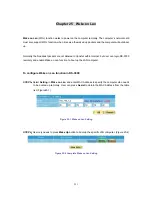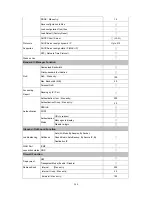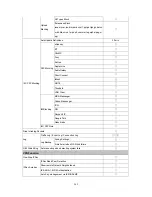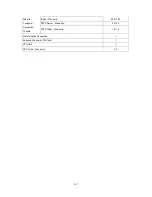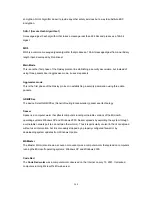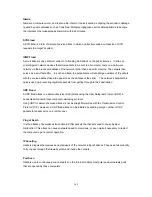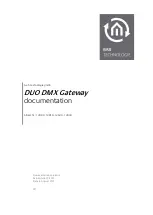
NAT
Network Address Translation. A network algorithm used by Routers to enables several PCs to share
single IP address provided by the ISP. The IP that a router gets from the ISP side is called Real IP,
the IP assigned to PC under the NAT environment is called Private IP.
DHCP
Dynamic Host Configuration Protocol. A protocol that enables a server to dynamically assign IP
addresses. When DHCP is used, whenever a computer logs onto the network, it automatically gets an
IP address assigned to it by DHCP server. A DHCP server can either be a designated PC on the
network or another network device, such as router.
DNS
A program that translates URLs to IP addresses by accessing a database maintained on a collection or
Internet servers.
DDNS
Dynamic Domain Name System. An Algorithm that allows the use of dynamic IP address for hosting
Internet Server. DDNS service provides each user account with a domain name. Router with DDNS
capability has a built-in DDNS client that updates the IP address information to DDNS service provider
whenever there is a change. Therefore, users can build website or other Internet servers even if they
don’t have fixed IP connection.
Subnetwork or Subnet
Found in larger networks, these smaller networks are used to simplify addressing between numerous
computers. Subnets connect to the central network through a router, switch or gateway. Each individual
wireless LAN will probably use the same subnet for all the local computers it talks to.
IP Address
IP (Internet Protocol) is a layrer-3 network protocol that is the basis of all Internet communication. An IP
address is 32-bit number that identifies each sender or receiver of information that is sent across the
Internet. An IP address has two parts: an identifier of a particular network on the Internet and an
identifier of the particular device (which can be a server or a workstation) within that network. The new
IPv6 specification supports 128-bit IP address format.
MAC
Media Access Control. MAC address provides layer-2 identification for Networking Devices. Each
Ethernet device has its own unique address. The first 6 digits are unique for each manufacturer.
When a network device have MAC access control feature, only the devices with the approved MAC
265
Summary of Contents for RS-3000
Page 1: ...1 RS 3000 Office UTM Gateway User s Manual ...
Page 45: ...Figure 5 11 PPTP Connection Figure 5 12 Complete PPTP Connection Setting 43 ...
Page 133: ...Figure15 3 Traffic Log Monitor WebUI 131 ...
Page 142: ...Figure15 19 Complete Policy Setting 140 ...
Page 183: ...Figure17 33 Create Folder WebUI 181 ...
Page 185: ...Figure17 35 Select Folder for Spam Mail to move to 183 ...
Page 187: ...Figure17 37 Compact SpamMail Folder 185 ...
Page 189: ...Figure17 39 Copy the File Address that SpamMail File Store 187 ...
Page 192: ...Figure17 42 Confirm that All of the Mail in SpamMail File had been Deleted 190 ...
Page 194: ...Figure17 44 Create Folder Function WebUI 192 ...
Page 196: ...Figure17 46 Select the Folder for Needed Spam Mail to Move to 194 ...
Page 198: ...Figure17 48 Compact HamMail File 196 ...
Page 200: ...Figure17 50 Copy the File Address that HamMail File Store 198 ...

